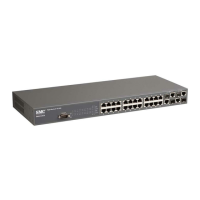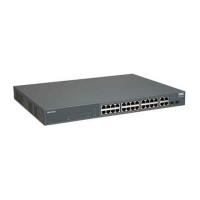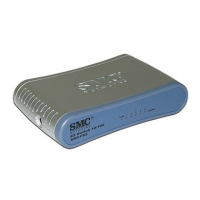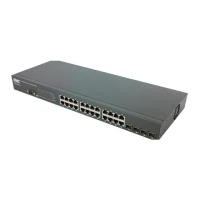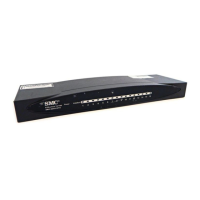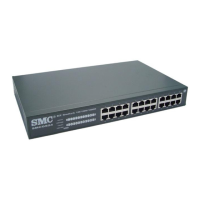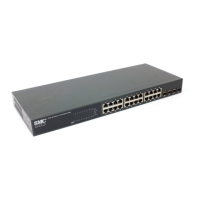O
VERVIEW
OF
THE
C
OMMAND
L
INE
I
NTERFACE
18-12
Command Groups
The system commands can be broken down into the functional groups
shown below
.
Table 18-4 Command Group Index
Command Group Description Page
General Basic commands for entering privileged access
mode, restarting the system, or quitting the CLI
19-1
System Management Display and setting of system information, basic
modes of operation, maximum frame size, file
management, console port and telnet settings,
system logs, SMTP alerts, and the system clock
20-1
Simple Network
Management
Protocol
Activates authentication failure traps; configures
community access strings, and trap receivers
21-1
User Authentication Configures user names and passwords, logon
access using local or remote authentication,
management access through the web server, Telnet
server and Secure Shell; as well as port security,
IEEE 802.1X port access control, and restricted
access based on specified IP addresses
22-1
Access Control List Provides filtering for IPv4 frames (based on
address, protocol, TCP/UDP port number or
TCP control code), IPv6 frames (based on
destination address, next header type, or flow
label), or non-IP frames (based on MAC address or
Ethernet type)
23-1
Interface Configures the connection parameters for all
Ethernet ports, aggregated links, and VLANs
24-1
Link Aggregation Statically groups multiple ports into a single logical
trunk; configures Link Aggregation Control
Protocol for port trunks
25-1
Mirror Port Mirrors data to another port for analysis without
affecting the data passing through or the
performance of the monitored port
26-1
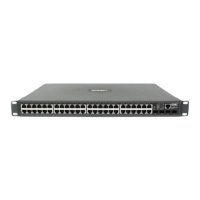
